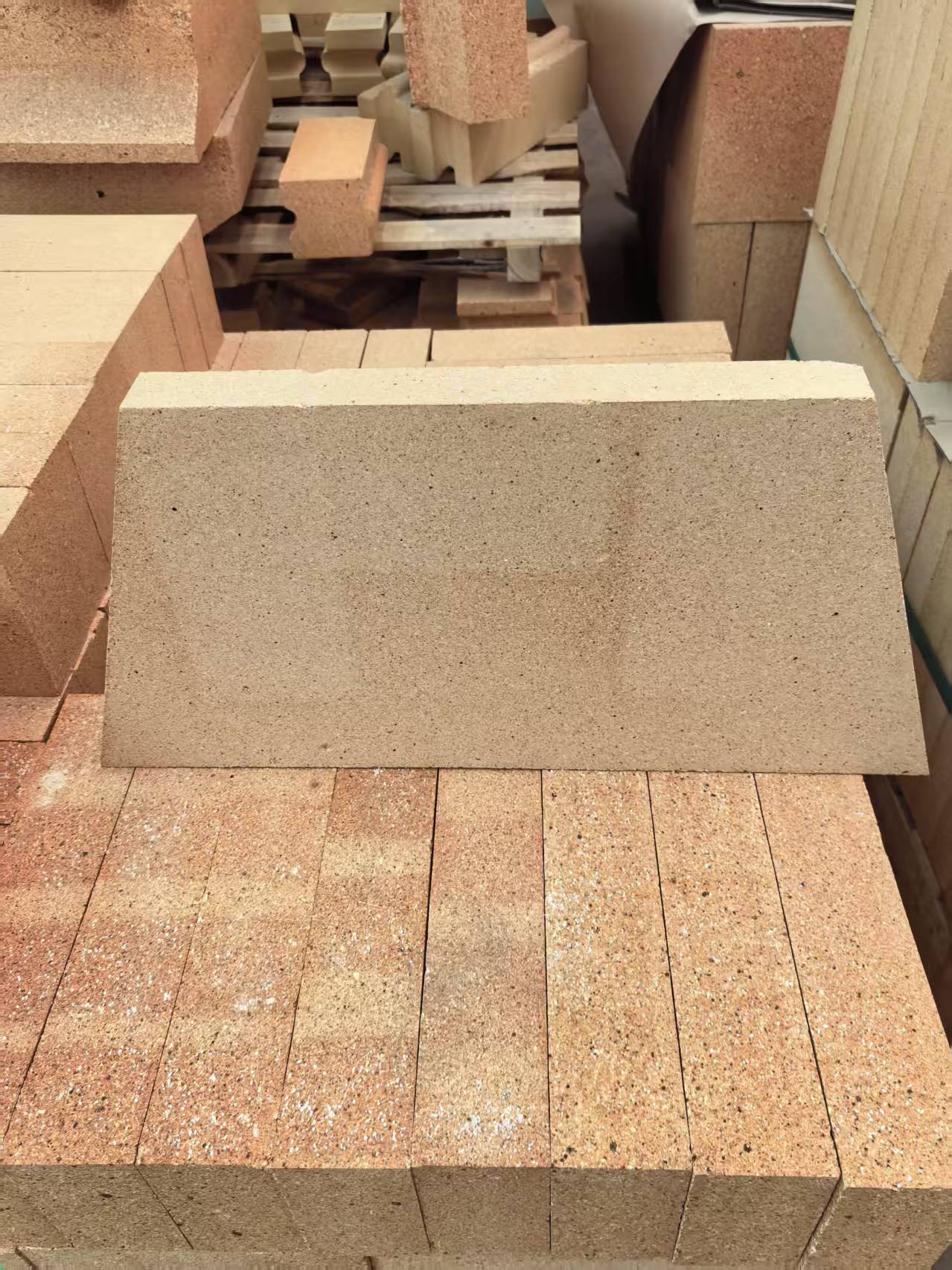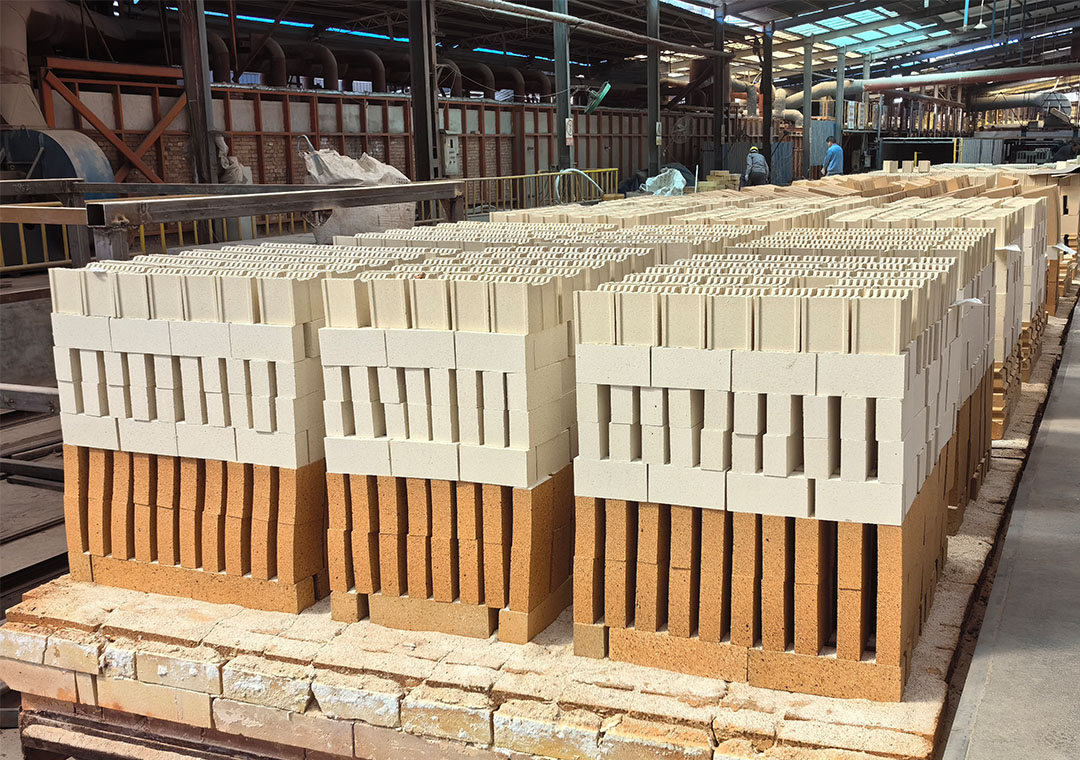Fire Clay Insulating Brick: Lightweight Strength for Efficient Thermal Control
In modern industrial furnace design, achieving both thermal efficiency and structural reliability is essential. Fire clay insulating brick perfectly balances these two needs. Engineered with a lightweight porous structure and made from high-quality refractory clays, this material provides excellent heat insulation, low bulk density, and good mechanical strength, making it a core component in energy-efficient refractory systems.
Material Composition and Structure
Fire clay insulating brick is primarily composed of alumina (Al₂O₃) and silica (SiO₂), derived from natural fire clay. Controlled addition of foaming agents and organic materials during production creates a uniform, fine pore structure, which significantly reduces density while maintaining structural integrity.
Depending on the application temperature, fire clay insulating bricks are classified into several grades — typically IFB-23, IFB-26, IFB-28, and IFB-30, corresponding to service temperatures between 1260°C and 1650°C.
The final product is a lightweight, low-conductivity refractory brick with smooth surfaces and precise dimensions, allowing easy installation and reliable thermal performance.
Performance Features
1. Excellent Thermal Insulation
The micro-porous structure of fire clay insulating brick significantly reduces heat transfer. This low thermal conductivity minimizes heat loss, ensuring that industrial furnaces maintain optimal internal temperatures while keeping outer walls cool.
2. Lightweight yet Strong
Compared with dense refractory bricks, fire clay insulating bricks weigh up to 70% less, reducing furnace structural load. Despite their low density, they retain sufficient mechanical strength to withstand normal service stress.
3. High Refractoriness and Dimensional Stability
With high alumina content and uniform texture, these bricks maintain shape and strength at elevated temperatures, ensuring long-term lining stability.
4. Good Thermal Shock Resistance
The brick’s low thermal expansion rate and uniform pore distribution help it resist cracking under rapid temperature changes, extending lining life.
5. Energy Efficiency and Cost Reduction
By reducing heat storage and energy loss, fire clay insulating bricks improve furnace efficiency and lower fuel consumption — a key factor for modern sustainable production.

Industrial Applications
The versatility of fire clay insulating brick makes it suitable for a wide range of high-temperature industrial applications:
Steel and Metallurgy: Used as a backup layer behind dense refractory linings in blast furnaces, tundishes, and reheating furnaces.
Ceramics and Glass Industry: Applied in kiln walls, arches, and flues, providing lightweight insulation with stable performance under repeated firing cycles.
Cement and Lime Kilns: Serves as insulation in preheater zones, cooler areas, and kiln hoods, reducing shell temperature and fuel costs.
Petrochemical and Power Plants: Installed as insulation in heating furnaces, boilers, and reformers, protecting structural steelwork from excessive heat.
Non-Ferrous Metal Smelting: Offers excellent insulation for aluminum melting and zinc refining furnaces, resisting slag and vapor corrosion.

Advantages of Fire Clay Insulating Brick
Lightweight, easy to handle and install
Excellent heat retention and energy savings
High refractoriness with stable structure
Compatible with dense refractory linings
Long service life and low maintenance needs
Non-toxic, environmentally safe material
Conclusion
Fire clay insulating brick is a practical and efficient solution for high-temperature insulation. Its combination of lightweight design, thermal efficiency, and durability makes it a preferred material for industrial furnaces, kilns, and reactors across metallurgy, ceramics, and petrochemical industries.
For engineers seeking to reduce energy consumption while maintaining reliable heat containment, fire clay insulating brick offers proven performance — a cost-effective, long-lasting choice that supports both productivity and sustainability in modern refractory systems.
Inquiry Now
Please leave your e-mail and we will contact you as soon as possible
contact us
Your satisfaction is our top priority. Whether you have questions, need support, or want to share feedback, our dedicated team is ready to assist you every step of the way.